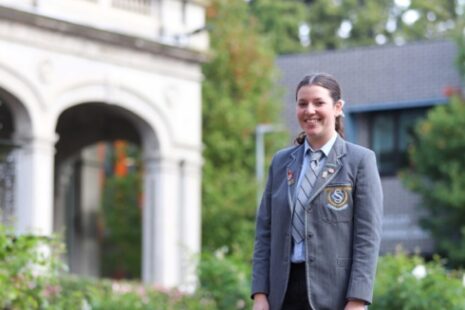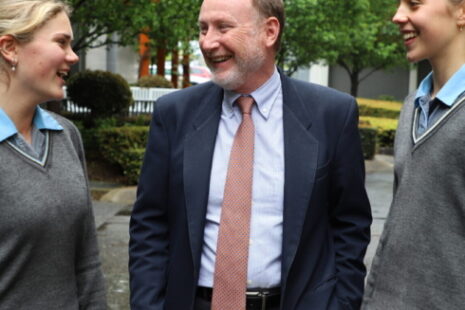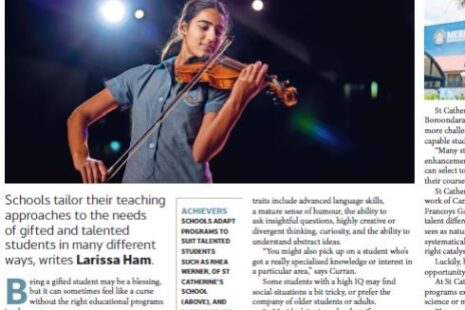Teaching for Thinking
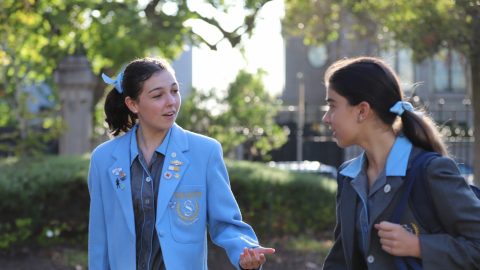
This year, St Catherine’s has formalised our Teaching for Thinking Agenda through a partnership with Peter Ellerton from the University of Queensland’s, Critical Thinking Project. As we step forward each year with new VCE Study Designs, there are more frequent calls for students to have a stronger capacity in critical and analytical thinking. Of course, critical and analytical thinking is also desired well beyond School as it shapes much of the knowledge economy and changing nature of the workforce. Such examples include identifying biases in data, news and in people’s own interpretations, developing deeper understanding of complex ideas and exercising empathy for different perspectives.
In 2013, 93% of employers surveyed by the Association of American Colleges and Universities agreed with the statement that a (job) candidate’s demonstrated ability to ‘think critically, communicate clearly, and solve complex problems is more important than their undergraduate major’. In other words, ‘what you know’ is not as important as ‘how you know’. This reveals the need to prioritise critical and innovative thinking over recalling content knowledge.
The question for educators is – how should we respond? How do we prepare our students to become the knowledge makers, the innovators and the problems solvers of the future? Ultimately, we need to make education more about thinking and intellectual challenge. The three related questions about classroom thinking (above) shaped much of our Professional Learning Seminars undertaken by teachers in January of this year. It follows that simply lecturing or emphasising recall of memorised factual information would be important if we just needed students to regurgitate facts but that is not useful if we want our students to select, shuffle, justify, re-combine, or apply existing facts to new ideas, and to of course, solve new problems. Students resorting to a learning approach captured in the sentiment of “just tell me what I need to learn” with simply memorising work is no longer considered a successful nor an effective learning option.
One such example that I provided at the recent Senior School Parent Information Evening included a question from the 2018 VCE Biology Examination about Botulinum Toxin (Botox), produced by the bacteria Clostridium Botulinum. In this three-part question, students had to demonstrate their understanding of the content of the immune response to bacteria compared to viruses. This also gives rise to the often-heard student comment: “it was on the test but we were not taught this in class?” Of course, the content of Botox was not part the VCE Biology curriculum but the human response to bacteria was a key component requiring application and justification within the context of a new topic.
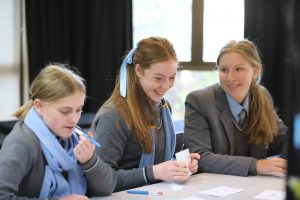 In 2019, the Senior School implemented a remodelled academic structure at St Catherine’s in response to Director for Education and Skills at the OECD, Andreas Schleicher’s criticism of the Australian Curriculum that highlighted “it’s a mile wide but an inch deep”. Our remodelled academic program re-prioritised the Core curriculum areas of English, Mathematics, Humanities and Science in Years 7-10. The revised academic model included additional time for the Unit 1 & 2 VCE Courses studied in Year 11, with the intention to build a greater depth of knowledge and improved readiness for VCE Unit 3 & 4 studies. The focus of the new academic model was to ultimately lift the classroom practice from covering content to ensuring an opportunity to really unpack the curriculum and VCE syllabus.
In 2019, the Senior School implemented a remodelled academic structure at St Catherine’s in response to Director for Education and Skills at the OECD, Andreas Schleicher’s criticism of the Australian Curriculum that highlighted “it’s a mile wide but an inch deep”. Our remodelled academic program re-prioritised the Core curriculum areas of English, Mathematics, Humanities and Science in Years 7-10. The revised academic model included additional time for the Unit 1 & 2 VCE Courses studied in Year 11, with the intention to build a greater depth of knowledge and improved readiness for VCE Unit 3 & 4 studies. The focus of the new academic model was to ultimately lift the classroom practice from covering content to ensuring an opportunity to really unpack the curriculum and VCE syllabus.
Teacher feedback, following the changes in 2019 that created semester-long Year 10 Science electives in Chemistry, Physics, Biology and Psychology, included students obtaining a greater depth of knowledge, improved VCE readiness and girls feeling confident to embrace the challenges of learning the nuances of difficult concepts.
How teachers use this additional time is a key focus in the Senior School. The concept of a greater ‘depth of knowledge’ is most often applied to the ‘thinking that students do’ – during class time, assessment and evaluation. Undoubtedly, the most important thing happening in a classroom at any given time is what a student is thinking. Key questions for teachers include:
- How do you know students are thinking in your classroom?
- How do you plan for student thinking?
- How do you give feedback on students’ thinking?
The development of students’ higher-order intellectual skills or cognitive thinking abilities is the most important educational task of schools today. As one example, the Australian Curriculum and the current VCE English Study Design, requires secondary school students to critically analyse the way in which language is used to persuade in a variety of texts. Students examine the ways in which persuasive language is used to express an argument to strengthen the intended impact of a text in media texts, including newspapers and multimodal texts. As they progress to Year 12, students develop a critical understanding of the contemporary media and the differences between media texts. The Year 12 English course and examination asks students to analyse how written and visual techniques are used to persuade readers, which is essential to interpreting the world with a critical and discerning mind. These abilities underpin our students’ perceptions of the world and consequently decisions they make.


